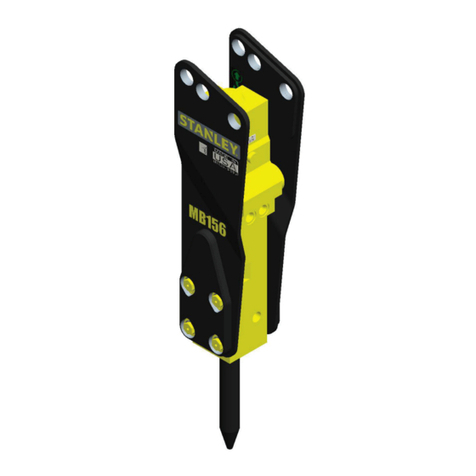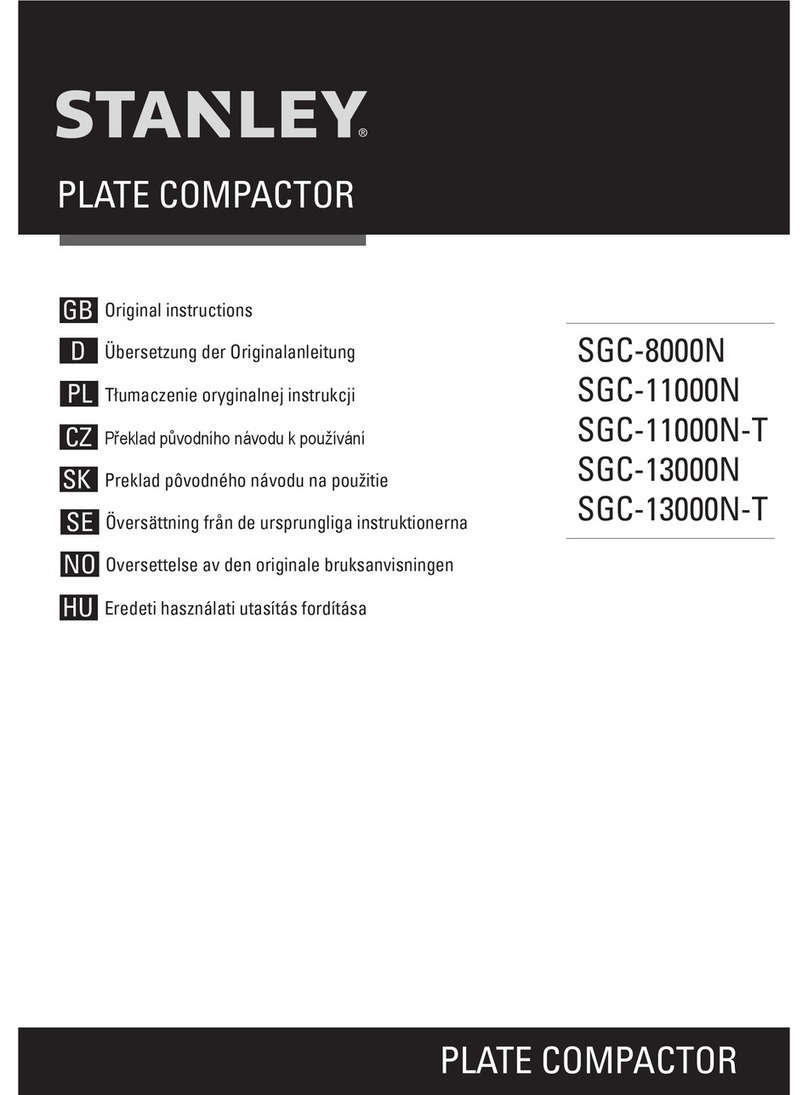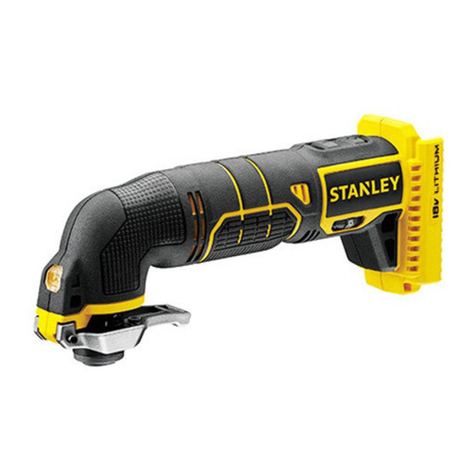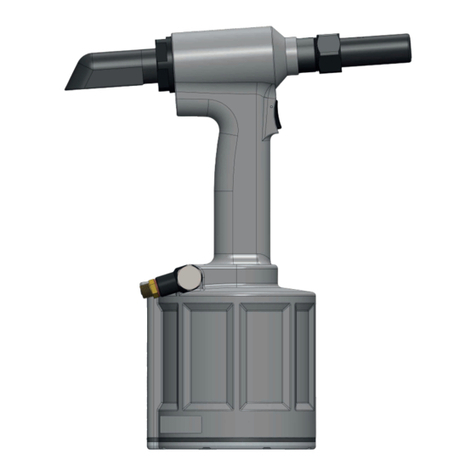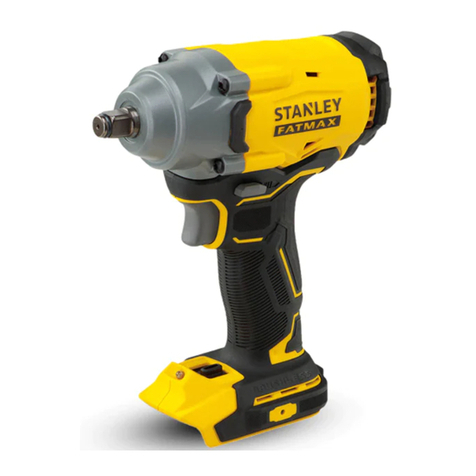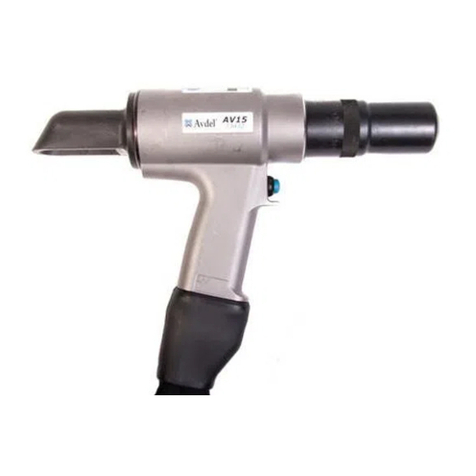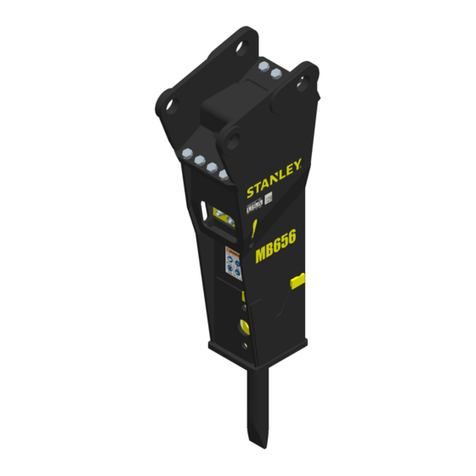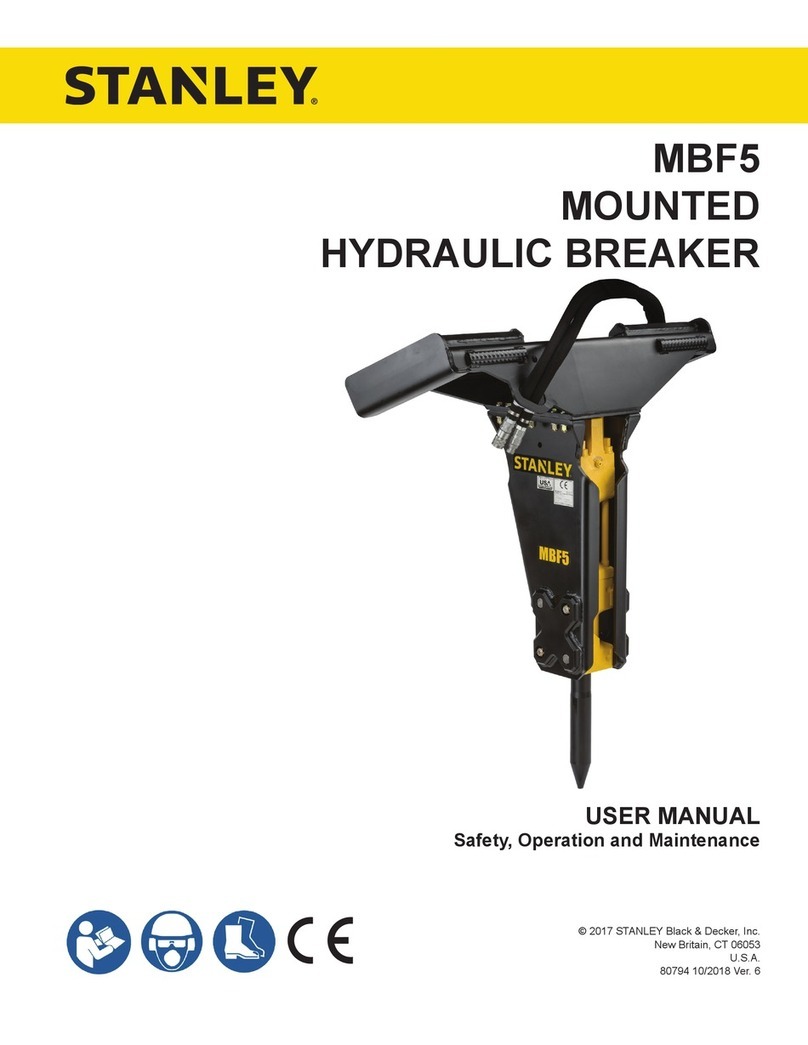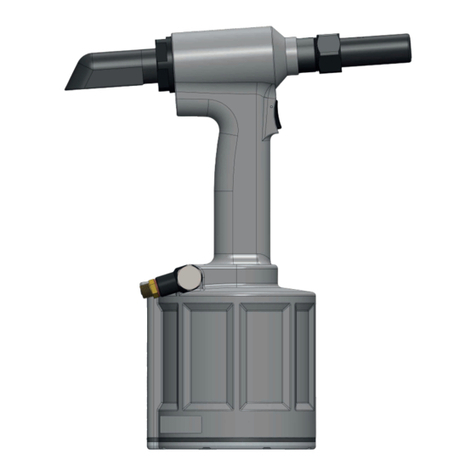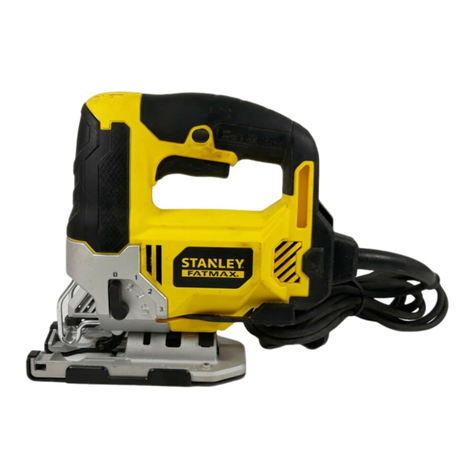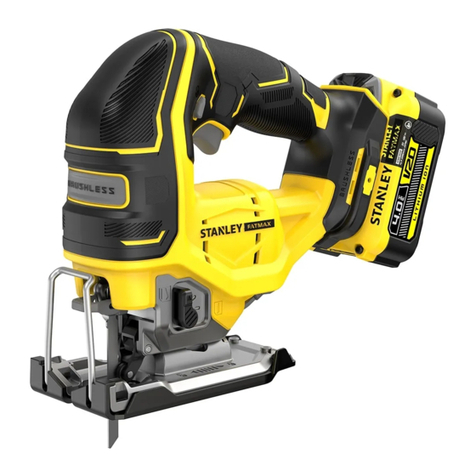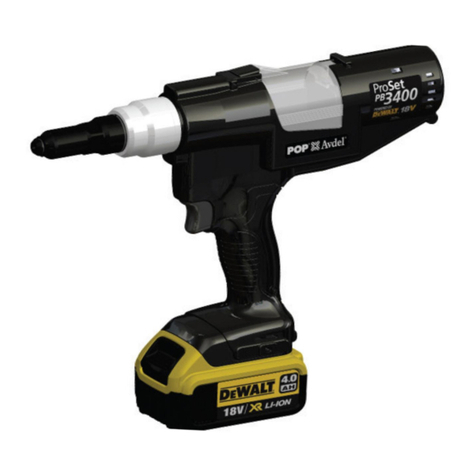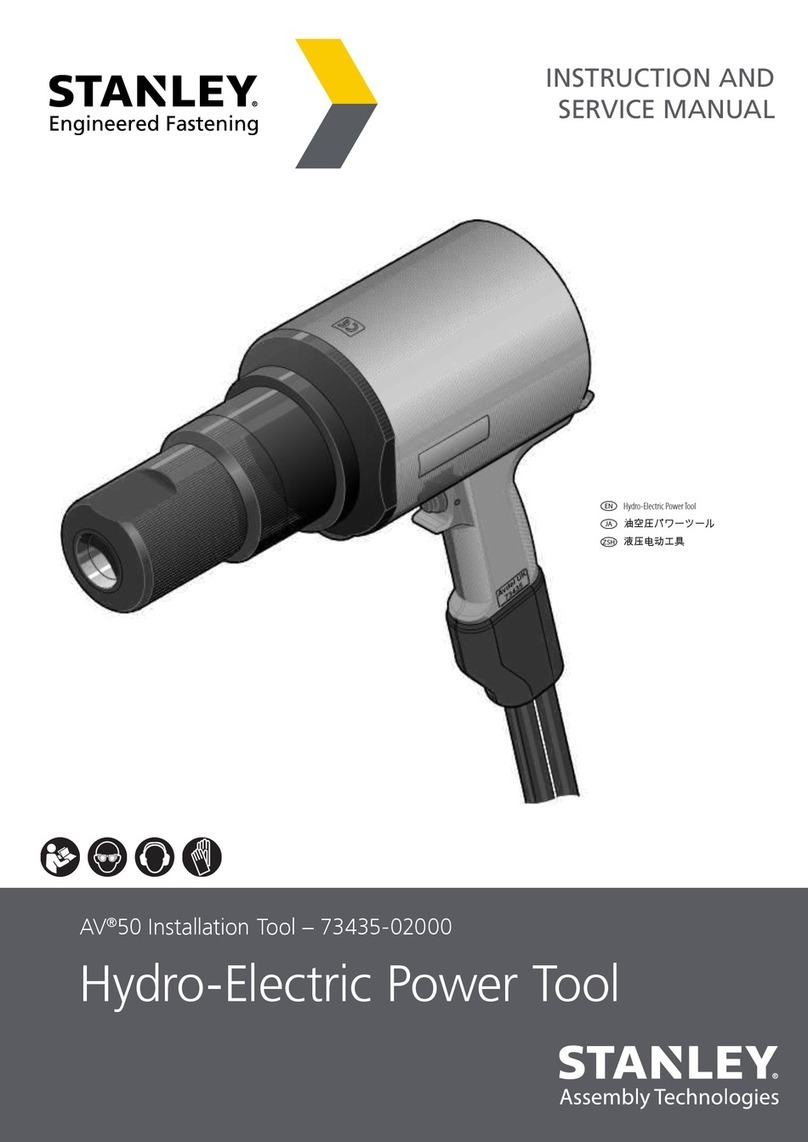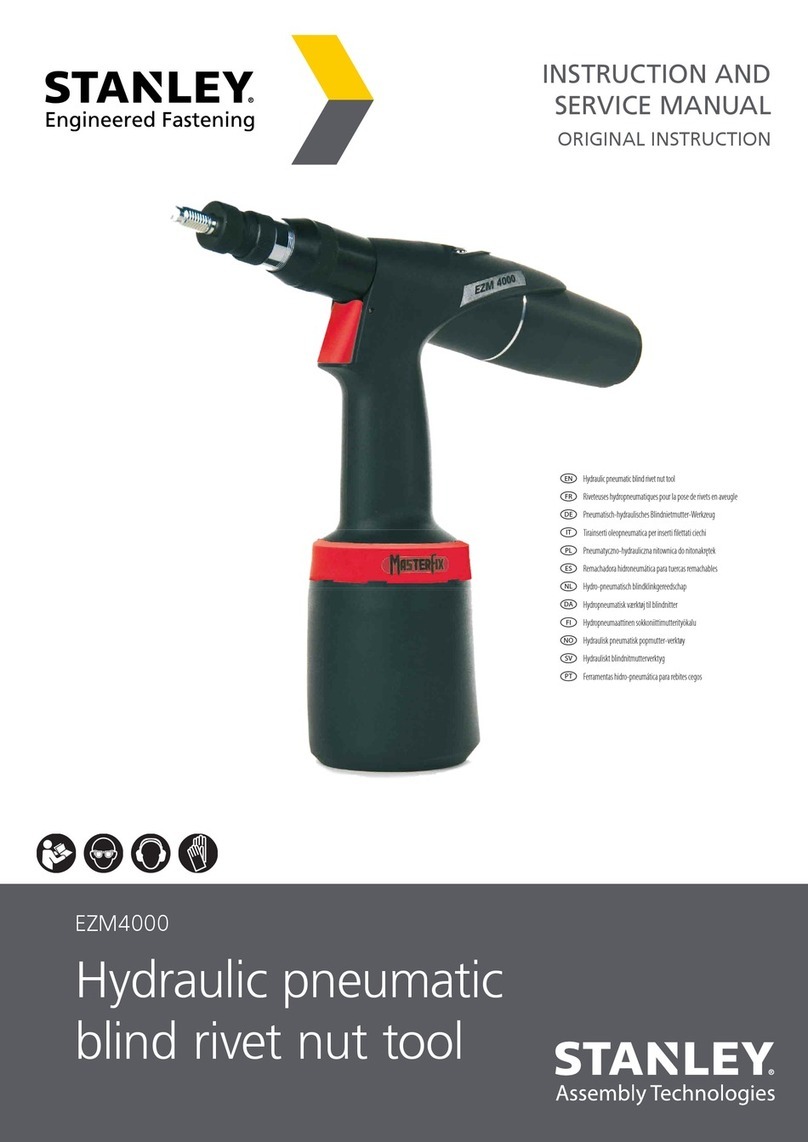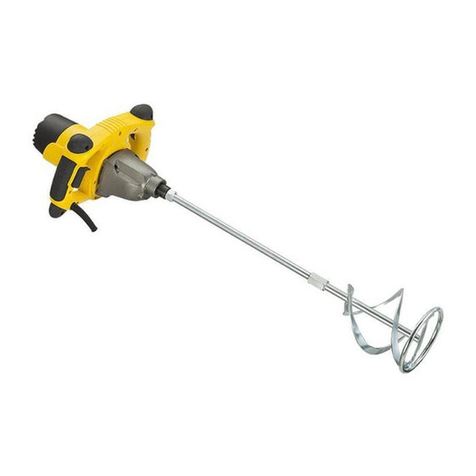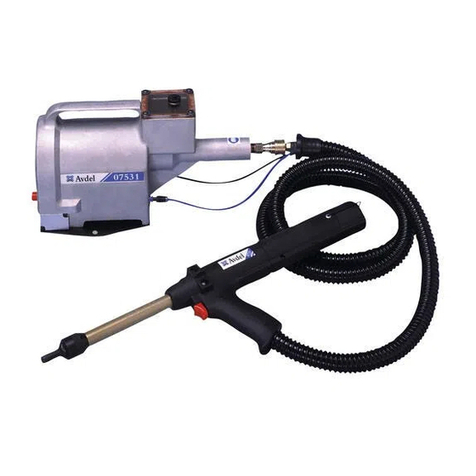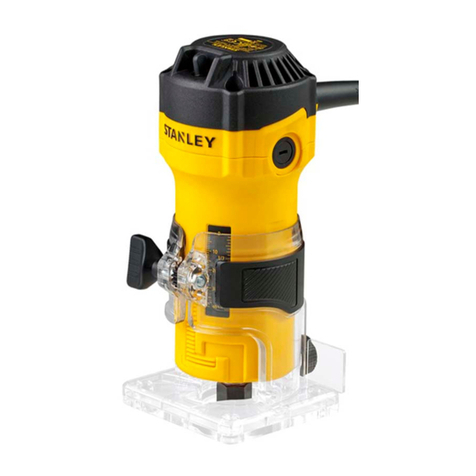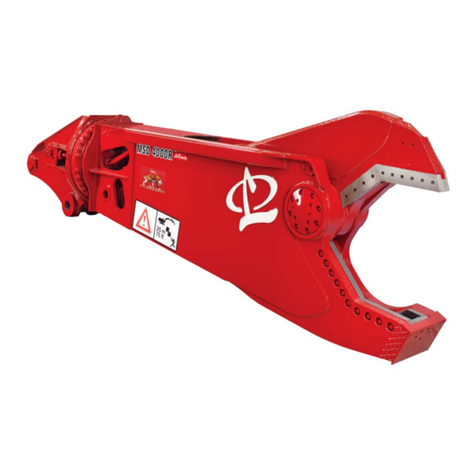
BR50 User Manual ◄ 5
Tool operators and maintenance personnel must always
comply with the safety precautions given in this manual
and on the stickers and tags attached to the tool and
hose.
These safety precautions are given for your safety.
Review them carefully before operating the tool and
before performing general maintenance or repairs.
Supervising personnel should develop additional
precautions relating to the specic work area and local
safety regulations. If so, place the added precautions in
the space provided in this manual.
The BR50 Hydraulic Breaker will provide safe and
dependable service if operated in accordance with the
instructions given in this manual. Read and understand
this manual and any stickers and tags attached to the
tool and hoses before operation. Failure to do so could
result in personal injury or equipment damage.
• Operator must start in a work area without
bystanders. The operator must be familiar with all
prohibited work areas such as excessive slopes and
dangerous terrain conditions.
• Establish a training program for all operators to
ensure safe operation.
• Do not operate the tool unless thoroughly trained or
under the supervision of an instructor.
• Always wear safety equipment such as goggles,
gloves, ear, head, and breathing protection, and
safety shoes at all times when operating the tool.
• Do not inspect, carry or clean the tool while the
hydraulic power source is connected. Accidental
engagement of the tool can cause serious injury.
• Supply hoses must have a minimum working
pressure rating of 2500 psi/175 bar.
• Be sure all hose connections are tight.
• The hydraulic circuit control valve must be in the
OFF position when coupling or uncoupling the tool.
Wipe all couplers clean before connecting. Use only
lint-free cloths. Failure to do so may result in damage
to the quick couplers and cause overheating of the
hydraulic system.
• Do not operate the tool at oil temperatures above
140 °F/60 °C. Operation at higher oil temperatures
can cause operator discomfort and may damage the
tool. Never come in contact with the tool bit, the bit
can get hot.
• Do not operate a damaged, improperly adjusted, or
incompletely assembled tool.
• Do not weld, cut with an acetylene torch or hard-
face the tool bit.
• To avoid personal injury or equipment damage,
all tool repair, maintenance and service must only
be performed by authorized and properly trained
personnel.
• Do not exceed the rated limits of the tool or use the
tool for applications beyond its design capacity.
• Always keep critical tool markings, such as labels
and warning stickers legible.
• Always replace parts with replacement parts
recommended by Stanley Hydraulic Tools.
• Check fastener tightness often and before each use
daily.
• Never operate the tool if you cannot be sure that
underground utilities are not present.
• Do not wear loose tting clothing when operating the
tool.
• Warning: Use of this tool on certain materials during
demolition could generate dust potentially containing
a variety of hazardous substances such as asbestos,
silica or lead. Inhalation of dust containing these or
other hazardous substances could result in serious
injury, cancer or death. Protect yourself and those
around you. Research and understand the materials
you are cutting. Follow correct safety procedures
and comply with all applicable national, state or
provisional health and safety regulations relating to
them, including, if appropriate, arranging for the safe
disposal of the materials by a qualied person.
SAFETY PRECAUTIONS

